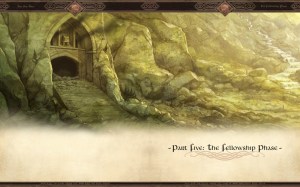This article could also be called: Why should I try The One Ring RPG? But I picked this title, because there are 50 million D&D players and many have never tried another roleplaying game. Many would like to, but which one to pick? I think there are many arguments for why The One Ring RPG should be a top option.
This article is also a review, but it is NOT a comparison as to which game is best. I love D&D, but the One Ring does things differently – and sometimes better – than the most popular RPG in the world. I have used D&D 5e as context for The One Ring’s mechanics, because that helps explain them to a large audience.
Reading this article, I hope that you get a taste for this game, or get inspired by the mechanics, whether you are a D&D player or not!
In short, I think the One Ring 2nd edition is an excellent fantasy RPG and a great pick for D&D players who want to try something new, yet familiar. The game will appeal to a lot of fantasy lovers, and I think it can be a great way to introduce new people to roleplaying games. The game is designed by Francesco Nepitello and Marco Maggi, and now published by Free League Publishing (Mörk Borg, the Alien RPG, Tales from the Loop, Vaesen and many other award winning, great games).
The rules are fairly simple and the setting is familiar to anyone interested in fantasy. Furthermore, the game system facilitates characters and stories that fit the world and captures the mood of Middle-earth perfectly. The artwork is amazing and the writing oozes of the designers’s love for Tolkien’s world.
This game lets you step right into the Prancing Pony, smell the pipeweed, hear the songs and meet an intimidating Ranger. Or perhaps you cross the cold Misty Mountains as a homesick hobbit alongside a couple of doughty Durin’s Folk to recover lost treasure while being hunted by orcs of Angmar? I could go on but you get it!
Below, I’ve listed some of the things that the One Ring does well, and less well, for quick reference.
There are two major reasons, why the two games are very different: their design history and being generic versus focused on one setting.
The original D&D was a system cobbled together as they invented it – and expanded upon it gradually – ending up with a hodgepodge of mechanics. More than 30 years later, the designers of D&D 5th edition created a game that is faithful to the first editions of the game, but fairly modern in design, with a very robust and fun tactical combat system.

D&D is also a fairly generic fantasy roleplaying game which can be used to create many types of heroic fantasy games, and is easy to homebrew monsters, magic and worlds for, which is a big advantage. It can also be used for gothic horror, low magic fantasy etc., but isn’t really tailored for it.
The One Ring is different. It is a consistent modern system that focuses on creating a very particular game experience. The rules are interlinked to enhance the game’s particular focus, mood, tone and themes. After the bullet points below, I will go through the major parts of the core rulebook and provide insight into how the new edition of The One Ring works – using D&D to provide context. Players who aren’t D&D fans will still get a solid understanding of the game. If you are used to many different games, many of the mechanics will be familiar to you.
First, a quick summary.
What does The One Ring 2ed do well?:
- Low magic, high fantasy
- Mood, atmosphere and epic adventures (with a taste of sorrow and futility)
- Provides a perfect “Middle-earth experience”
- Character development in the hands of the players
- Travel and exploration
- Combat and logistics at a more narrative level
What does The One Ring do less well?:
- Tactical combat on a grid
- Hackability – this is not meant to be a generic system, but is tied closely to the source material
- Long dungeon crawls and hack & slash
The One Ring (2ed) is probably for you if:
- You want to adventure in Middle-earth
- You want to try a low-magic fantasy RPG
- You want a fantasy RPG with more focus on narrative and less focus on tactical combat
- You want to try an RPG with interesting mechanics that support the core aspects of the game
The One Ring (2ed) is probably NOT for you if:
- You don’t like the Middle-earth setting
- You prefer high magic games, with lots of flashy spells, magic loot and big BOOMS!
- You just want to relax bashing monsters and looting their stuff (I love that too, sometimes)
- You prefer games with extensive character customization options
If you are already sold, you can pre-order the game or purchase the PDF.
That was the short version. Do you want to know more? Then, read on dear guest.
Where and when does the game take place?
The default game is set between the events of the Hobbit and the Lord of the Rings in the Eriador region, where you find places like Hobbiton, Bree, the Old Forest, three petrified trolls, the Barrow Downs and many other locations known from the source material. It also contains a number of locations not featured prominently in the Lord of the Rings or the Hobbit, such as Fornost and Tharbad.
More specifically, the game is meant to begin around 2965. This takes the setting forward from the 1st edition (and Adventures in Middle Earth) which begins around 2947, and shifts the geographical focus away from Wilderland – the region beyond the Misty Mountains with Mirkwood and the Lonely Mountain. At least for now.
That said, you can use the rules to play in any area of Middle-earth, and even shift the time to the Second Age or the Fourth, if you find that suits your purpose.
Sourcebooks for many of the well known regions came out for the previous edition of the game. Furthermore, you can pick up sourcebooks for Middle-Earth Role Playing, which came out in the early 80’s.
Core system
The system in The One Ring is very player-facing.
Characters in The One Ring have three attributes: strength, heart and wits. They range from 2-7 – rarely 8. For each attribute there are six associated skills. As strength covers everything physical, from keen eyes to a great singing voice, skills associated with strength include things like Awe, Athletics and Awareness. Heart covers skills like the Travel, Insight and Courtesy while Wits has skills like Lore, Riddle and Persuade. Combat skills are separated and there are only four: axes, spears, swords and bows. Ranks in skills go from 1-6, but beginning characters typically have ranks from 0-3.
The game uses a dice pool system to resolve actions. Players roll one or more dice and if the total added together reaches the target number, you succeed at your task. The player rolls one Feat Dice (D12) and any success dice (D6) they get – which usually comes from your skills or combat abilities – or two D12 and take the highest/lowest if the character has advantage/disadvantage, which is called ‘favoured/illfavoured’ in this game.
EXAMPLE: Let’s say the Hobbit Mirabella tries to sneak past an orc guard. She has three ranks in Stealth, so you roll 3D6, but the player has picked Stealth to be a favoured skill, so she rolls 2d12, picks the highest and adds the result of the 3D6.
Does she succeed? In The One Ring, the Target Number isn’t decided by the game master, it is player-facing. As a player, your target number is derived from your own character. If you try a Wits skill, you roll against 20 minus your wits. As Stealth is a wits skill, Mirabella with Wits 5, would need to roll a total of 15 to sneak past the orc. Certain conditions may make rolls harder or easier, of course, usually by adding or subtracting success dice.
However, the dice have some additional features. In the accompanying dice set, the 12 on the D12 is marked with the G rune and if you roll a 12 your action always succeeds. The 11 on the D12 is the Eye of Sauron and counts as zero – or worse depending on circumstances. On the D6, sixes gives you a superior success, and you can convert sixes to bonuses in the game, such as doing a task silently, more damage or cancel a failure for another character. You can use normal D12s or D6s to play, or get the special dice for the game.
On the surface, the core system of The One Ring is more complex than rolling 1D20 and adding a number. But in play, The One Ring doesn’t have dozens of complex special abilities and hundreds of – cool – but complex – spells. Looking at the sum of its parts, the One Ring will be simpler for the vast majority of players.
The gameplay has a structure divided into an Adventuring Phase, where the Loremaster (DM/GM) has primary control, and a Fellowship Phase, where the players have primary control. You could say it is the ‘play’ and ‘downtime’ phases. Unlike D&D however, the One Ring has different rule structures for three important aspects of the adventuring phase: combat, journeys and councils. Further, there are concrete rules for their downtime, which fits the setting and interacts with the recovery of the characters, advancement of the characters and further exploration of the setting.
Below, I will try to describe – as briefly as I can – how the different parts work, and what makes them cool.
Characters
The characters you can play are explicitly heroes. However, they can be lost to The Shadow through greed, pride, wrath and a few other things.
Cultures and Callings
The character’s abilities are mainly defined by their Culture, not by their “class” which is named Callings. Examples of Cultures include: Men of Bree, Hobbit of the Shire, Elf of Lindon and Dunedaín.
When you create your character, each Culture has six different distributions of attributes you can pick from (or roll a random distribution). How these are distributed depends on the Culture, but all of them contain 21 attribute points, so they are equal, but different. For example, Men of Bree get a maximum of 4 in Strength whereas Dwarves of Durin’s Folk get 7, but max 4 in Heart.
On top of the three primary stats (strength, heart and wits), you also calculate three derived stats: endurance, hope and parry.
Endurance is basically your hit points (but more interesting, so I will get back to that). Hope you can spend to get bonus D6s and Parry is the target number for monsters to hit you – ie your armour class.
These three derived stats differ from Culture to Culture. Bardings have an Endurance score of their strength +20, but Hobbits only get +18.
Finally, each Culture comes with a couple of special bonuses called Cultural Blessings. For example the Dunedaín gets: Kings of Men, and receives a bonus attribute point.
After picking Culture, you select your Calling. The calling is what motivates the character to go on adventures. The six callings are: Captain, Champion, Messenger, Scholar, Treasure Hunter and Warden.
The mechanical effects are slight, but they define their Shadow Weakness, such as Lure of Secrets and Path of Despair (more on that later).
Virtues, Rewards and Gear
The One Ring operates with equipment and treasure at a higher level of abstraction than most fantasy RPGs, such as D&D. All characters are expected to have normal travelling gear, but are allowed a number of “useful items”, depending on their culture’s prosperity level. These items can help the character using a particular skill under certain circumstances, such as a great pipe or a liquor to infuse strength. Characters also start with the weapons and armour they desire, again based on their prosperity.
The abstraction also applies to treasure which isn’t counted in an exact number of coins, but Treasure Rating. When you gather a specific amount of treasure, your prosperity rating goes up.
At the beginning of the game each character gets one general Virtue and one Reward. As the character gains experience they can gain more virtues and rewards.
Virtues are akin to Feats in D&D 5e. and includes general abilities such as Dourhanded and Prowess, and virtues tied to your culture, which you can’t begin the game with but must buy with experience, such as: Dragon Slayer, Elbereth Gilthoniel! and Brave at a Pinch.
Rewards are special gear with a mechanical advantage, typically weapons or armor you have earned, such as a Keen sword or Cunningly Made mail shirt.
Derived stats
I want to mention the three derived stats in a bit greater detail, because, particularly Endurance, is a very interesting mechanic.
Your parry rating is the value which adversaries must roll to hit your character. Enemies don’t have a parry rating though. Instead, players roll against their character’s Strength target number, to see if they hit modified by the adversary’s parry rating – normally 0-3. Shields and other factors can add to a character’s parry rating, whereas armor helps you avoid Wounds.
Hope are points players can use to fuel certain abilities (sometimes to make a success ‘magical’) and to add additional D6’s to their rolls. Characters don’t recover Hope that easily, so they should be spent wisely.
Endurance is like Hit Points, and you can lose them from attacks or simply from events on your journey. When you reach zero you drop unconscious. But it is also related to your encumbrance rating (which is called Load in The One Ring). So, when you don gear or armor or carry treasure, you add Load, and when your endurance rating drops below your Load score, the character becomes Weary, which is bad because all rolls of 1,2 and 3 on the D6 then counts as zero.
The mechanical effect of this is that players must weigh carefully the benefit of more armor, shields, weapons etc. versus their ability to fight after a long journey or last through multiple encounters. In D&D, and many other games, more armor is almost always better, but that is not the case in The One Ring. The core mechanic is further supported by the explicit action of dropping your shield or helmet, to decrease your Load during combat, and the explicit rules for pack animals (if your prosperity rating is high enough) or you can bury the treasure you found, because each point of treasure counts as one Load point.
The Endurance mechanic beautifully creates interesting choices for the players AND it means that the fiction of the game will emulate the source material, where few characters wear armor and treasure is buried for later or left behind. I really dig that!
I am a bit baffled, however, that it seems like a strong starting character with 26 in Endurance, who wears a mail coat, helmet, spear and great shield is left with only 1 point of Endurance. That figure can be mitigated with Virtues and Rewards, but still. It might work mechanically for player characters, but it seems like the heavily armoure bands of Bardings or Gondor aren’t viable (dwarves halve the Load, so they are).
The Shadow
The concept of Shadow in the game affects both the characters and the adventure, so I’ll deal with it here at a high level.
There is one overall foe in the game and that is obviously Sauron and all his servants. In The One Ring, player characters are heroes and explicitly adversaries of Sauron.
In the game, there also is a very clear dichotomy between Servant’s of the Enemy, which are irredeemably Evil, and other foes like regular robbers, haughty elven guards or Dunland raiders, which are not.
I very much subscribe to the views that Matt Coleville lays out in the video “Everyone Loves Zombies”, basically saying that players sometimes need to face foes they can unambiguously fight and slay without feeling bad about it, and sometimes they should face foes where there are moral complexities. I am therefore very happy with how explicit this is done in the One Ring, and the support it has from the game system.
The mechanic to support this for characters is called Shadow points. Characters will gain Shadow points when they indulge in their darkest desires or from the fear and despair which the Enemy can induce. Players can roll to resist gaining points of course. Simple Greed, whenever the characters discover treasure, can result in Shadow points and they can gain them from Misdeeds: actions that are unheroic, such as stealing, threatening with violence or ending the life of a foe who isn’t evil. Further, dark sorcery can cause shadow point “damage”.
The result of accumulating shadow points is a descent along your character’s Shadow Path and into madness, and ultimately the end of the character as a PC. Whenever a character’s Shadow points reach the level of their Hope they have a Bout of Madness – a loss of control to their worst inclinations, like Boromir trying to take the ring or Thorin being overcome by greed for a while. This takes the character one step down their Shadow Path.
A character’s Shadow Path is determined by his calling, and they have evocative names like Dragon Sickness (greed) and Lure of Power. Each path has four stages of character flaws – roleplaying traits for the character. As an example, Lure of Power goes from resentful to tyrannical.

Mechanically, it has more features than this and ties into the down-time phase for example, but this covers the basics.
There is also a group-level mechanic. When more experienced heroes work against Sauron, it is possible that the enemy will respond. This is governed by the Eye of Sauron mechanic, which is a meter that slowly fills during an adventure when the heroes use magic or gain shadow points. When it reaches a certain point – depending on a number of factors – it has a negative narrative impact on the characters. It could be a direct attack on them, or perhaps the quarry they chase gets away or someone they thought an ally becomes an enemy.
I will need to play a longer game to really judge how the shadow points mechanic works in practice. In Adventures in Middle-earth (the 5e version of the game) the accumulation of shadow points seemed too slow to have a big impact, but it seems to be a bigger factor in this edition.
Adventuring
The adventuring phase has three major mechanical components, but in practice works like any other RPG with an adventure composed of various scenes or with the group exploring a location, like a dungeon.
Combat
Combat in The One Ring has been designed for play without miniatures, but using minis or drawing on a mat or screen can still be helpful.
When combat begins, there is usually first an opportunity for both sides to use missile fire before the melee begins.
Subsequently, during the melee, each character selects one of four stances: forward, open, defensive and rearward. The stance you pick also determines the order in which you act and gives access to particular actions, such as intimidate foes or rally comrades. Only the rearward enables characters to use ranged weapons, and it can be restricted, depending on how many enemies there are compared to the characters. The enemies are then distributed between the different PCs.
I will not go into great detail on the mechanics, but there are some interesting features:
Players can decide to halve the endurance damage they receive by deciding to get knocked back (an fall prone), and rolling sixes enables special bonuses/effects, depending on which type of weapon you use.
I did however find that the combat example in the game was so short, it wasn’t useful, so I created a more comprehensive example of the combat mechanics.
Endurance represents grit and the slow grinding down of your ability to defend yourself, where the final blow knocks you out of the fight – just like hit points in D&D. BUT! in The One Ring you can also get Wounded (similar to the Major Wound mechanic in Call of Cthulhu 7ed). Rolling 10 or 12 on the D12 causes a piercing blow (some effects can modify this) which can cause a Wound. Characters now roll a Protection roll – 1D12 and add the D6s they get from their armor. To avoid the Wound they must roll equal or higher than the Injury Rating of the weapon they were hurt by.
Only by getting Wounded can your character die. At the first Wound there is a 1 in 12 chance that you go down and is dying. A second wound always causes the character to drop and become “dying” and only a successful heal check will prevent them from dying within the hour.
One of the things I really like about the weapons is that spears are very viable and more likely to cause Wounds, if you roll 6s on your attack. Too often in fantasy games, swords are the superior weapon. Furthermore, I like that missile weapons don’t have a range. It is rarely relevant in RPGs anyway and just an annoying thing to track.
In addition, weapons that are special or magical can influence many aspects of combat, and characters can perform additional actions based on their stance, certain virtues etc.
Councils
Whenever the group tries to convince one or more important NPCs to aid them, the Loremaster can use the rules for councils. It works like a skill challenge or an extended test, where the characters have to gain a number of successes using different skills to convince for example Lord Elrond, a village council or the Shire Mayor to do what they want.
Journeys
Travel is a huge part of Tolkien’s writing, and it is supported by rules for travel. When the group is on a journey, the players designate four roles between them: Guide, Hunter, Look-out and Scout (similar to the Forbidden Lands RPG).
The group decides on a path, and the game comes with a hex map of Eriador, where the different areas are colour coded depending on their difficulty, and a few places have additional dangers.
When the group starts marching, their Travel skill determines how long they get before they encounter an event.
The events aren’t combat encounters (they could be in Adventures in Middle-earth), but things like Ill Choices, Mishaps and Shortcuts that the group must face. The events are randomly determined and targets one of the four roles. Through narrative and a skill roll, the group determines how they overcome the event. Failure can result in fatigue, which counts as Load, and can make the characters Weary. With luck, the events can also be beneficial by meeting a potential friend on the road, for example.
The game also comes with a nice Journey Log, where players can record their journey’s and any sights they might see or people they meet.
This system does not prevent you from springing combat on your players or adding more complex locations or events to the journey. I think it has been designed to add story and mood to the game, while not preventing your characters from ultimately reaching their journey’s goal – they might be weakened by their fatigue when they get there, though.
The Fellowship & the Fellowship Phase
In keeping with the source material, the group of characters isn’t a group of self serving sell-swords or loot happy anti-heroes. They are a fellowship – a Company working together – and there are some mechanics to support that.
First of all, each character has Fellowship focus – another character whom he or she is has a special bond with – and when they aid that person with Hope, the character gains two dice instead of one. However, if the character is seriously injured or suffers a bout of madness the character who has a bond with them gains a point of Shadow.
Typically the Fellowship is supported by a Patron – a benevolent and experienced NPC who aids and guides the group. This could be one of the very well known characters from Middle-earth such as Bilbo, Gandalf or Elrond or one of the lesser known figures, such as Círdan the Shipwright or Gilraen (Aragorn’s mother).
The players normally decide which Patron they wish to have at the outset of the game. Each patron comes with a special ability the group gains and adds a bonus to the group’s Fellowship Rating.
The Fellowship Rating is a pool of points the group has which they (most often) can use to regain Hope, but having Gandalf the Grey as Patron allows them to spend Fellowship points to make Shadow rolls favoured, for example.
In the Fellowship Phase – the down time period of the game – the players take more control of the narrative. They normally stay at their Safe Haven – such as Bree or Rivendell – and can then select a few actions (called Undertakings) they wish to do during this period. During the winter season (Yuletide) there are also some additional special options, as that period is typically several months, and allows the characters to go back to their families or kin, visit far off patrons and the like.
Undertakings include Gather Rumours, Study Magic Item, Strengthen Fellowship and Write a Song (yes, songs have a mechanical effect!).
The Fellowship phase is also the time where Hope can be renewed Shadow scars can be healed – and it is the time that players can spend their hard earned XP!
If a character gets a reward from his culture – an grievous weapon, close fitting armor or the like – this is where the player narrates how they get it.
Lastly, the character can raise an heir. By spending XP and Treasure on raising an heir, the player can prepare a new character for when the current one dies or retires – a fun feature for a long campaign, and completely in keeping with the novels.
Adventures, Monsters, Magic & Lore
The game also comes with around 30 pages of information about Eriador, rules for generating magical treasure and Nameless Things from the dark, monster mechanics and 21 monster stat blocks and an example of a Landmark – an adventuring location with lore, NPCs, plot, treasure and monsters.
As is clear from the rules, the game is focused on adventures consisting of a number of scenes, potentially with a ‘dungeon style’ location. It is however not meant to be 4-6 encounters per adventuring day. I would expect to have combat in most sessions, but certainly not every session.
Lore & Landmarks
The lore in the book is a good foundation for gameplay briefly covering Bree-Land, the Shire (which is fully developed in the Starter Set), the Great East Road, the Green Way, the Barrow Downs and a few other locations.
It contains additional random tables for some of the locations and plenty of hooks for adventure. The tables include what you might find in a Troll Hole, what happens that night at the Prancing Pony or what you discover in an ancient ruin along the Green Way – could be a crumbling tower or a recently torched homestead? There are also NPCs for the characters to meet and problems that they need solved.
Looking at the original maps, they seem fairly empty of “civilization”, but in the lore and in the game, these regions contain many small villages and holdfasts, ruins of ancient keeps and so forth.
I like the tables, as they are a quick way to add the right flavour and a touch of something surprising to your game.
Adversaries
Compared to many fantasy games, the list of monsters is shorter in Middle-earth, but there are several variations of trolls, orcs, undead and spiders the characters can face.
The rules governing monsters differ from characters, as they don’t have three different attributes, but only one, and they don’t have Hope but points of Hate or Resolve depending on the type of monster. These points can be used as additional dice, just like Hope, or to power special abilities – akin to Legendary Actions from D&D.
Personally, I wish the monsters had 2-3 abilities instead of the typical one to make combat a bit more interesting. The method for creating Nameless Things in the appendix actually contains quite a long list of abilities, which is good inspiration for mechanics to add to monsters.
The designers also left out several groups of monsters for future publications, such as Giant Spiders and Dragons.
I would also have liked stats for at least one very powerful creature, like a Ring Wraith or a dragon, to put things in perspective.

Magical items
Characters are expected to find 1-3 magical treasures over the course of their adventures, but in The One Ring these items aren’t random – the characters are fated to find them.
In game terms, it means that the Loremaster is encouraged to draw up a list of 2-3 items for each character including names, a bit of lore and stats for each item. And when they find an appropriate treasure, the LM can pick one or more items from that list. This means that items are narratively bound to that character: they can’t be traded within the group and they will go with the character to her death, or into retirement (unless an heir has been raised).
A neat little feature is that you can spend an action in the Fellowship phase to unlock the next ability of the item, and if the player has spent valor in getting heirlooms from his culture, these “gifts” can be handed back, and in effect be “traded in” for upgrades to the wonderous artefact or magic weapon they recovered. It means the effort/xp spent earlier isn’t lost when they discover something better.
Final comments
I think The One Ring RPG 2nd edition is an excellent game fully focused on delivering the Middle-earth experience, enabling players to immerse themselves in Tolkien’s setting and have their own adventures meeting all the famous characters and foiling the plans of the Enemy. My imagination is certainly spurred.
The game is medium – towards light – crunch, and aims towards using rules to drive the narrative forward and make sure the game hits the right mood and atmosphere.
There are a lot of mechanics that I really like, and from my – very limited – experience the combat moved smoothly.
Reading the official forums, some fans of the 1st edition liked some aspects of the previous edition better. The previous edition had more mechanics for example for Councils and more uses for Hope. I can see that. As I understand it, in this edition, the designers have moved towards less rules for councils and more focus on letting the group narrate how it plays out. I think it is a matter of taste what you prefer.
If you have mostly played D&D 5th edition, I hope this article inspires you in your own game, and perhaps to pick up one of the many other great RPGs.
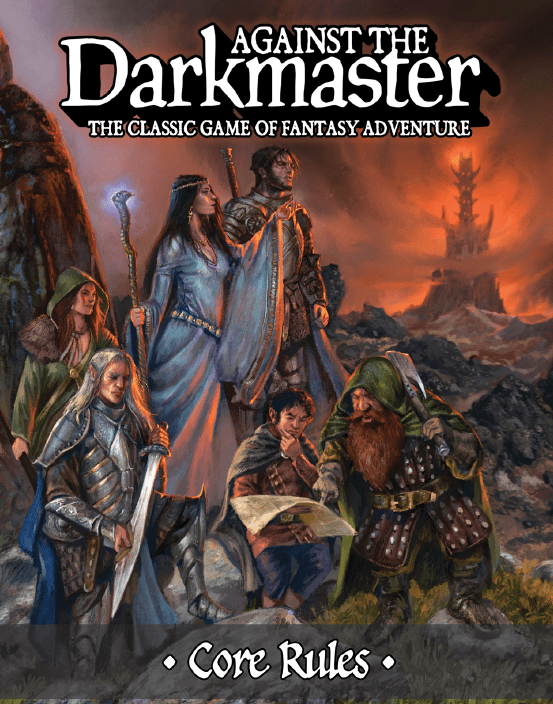
The One Ring 2nd Edition certainly touches the Middle-earth fan in me, and I hope to try it out as soon as I return to Copenhagen and my regular circle of gaming friends.
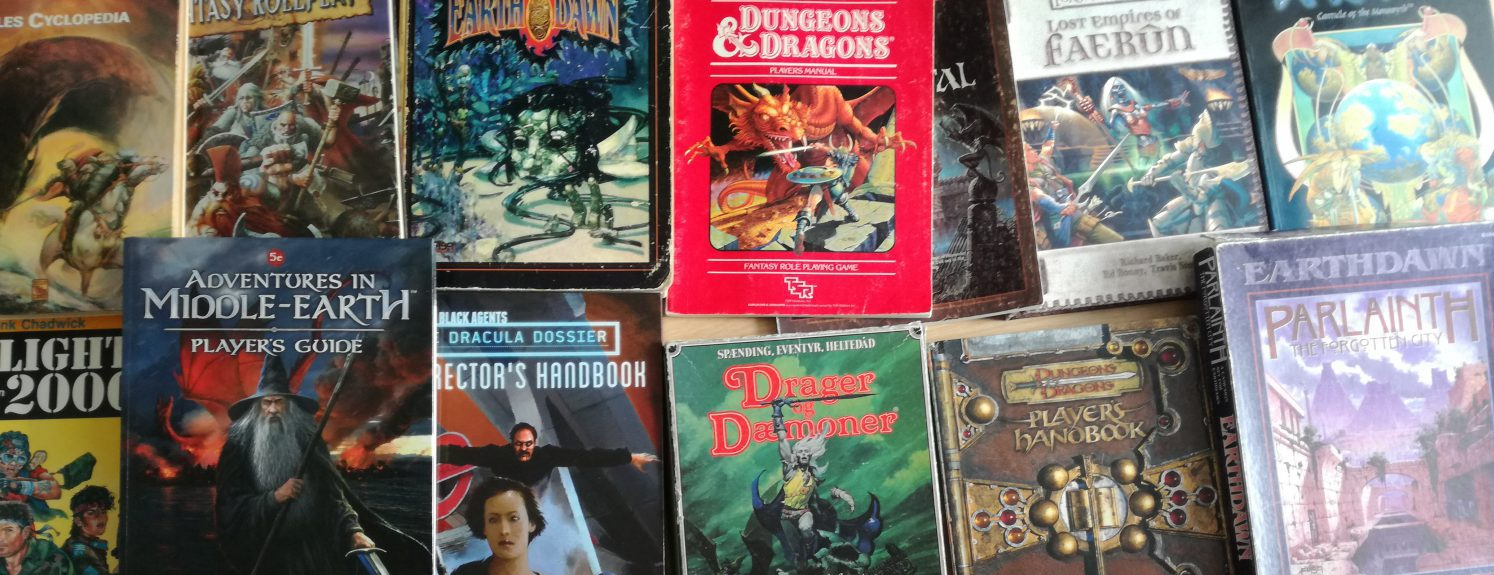




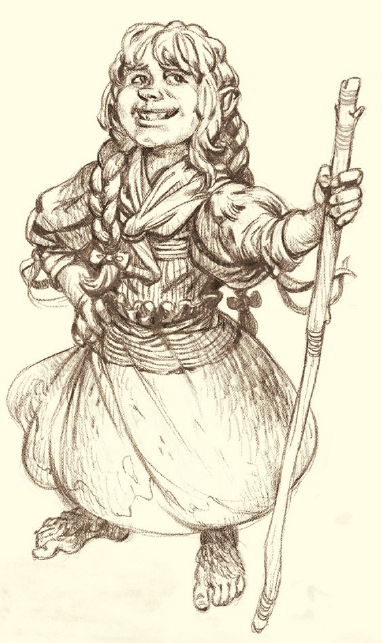


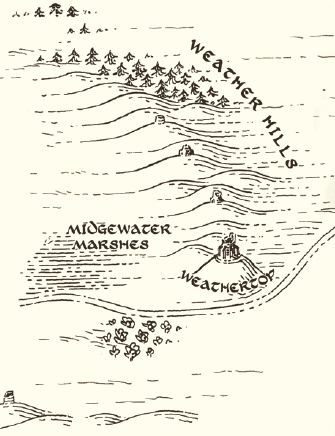
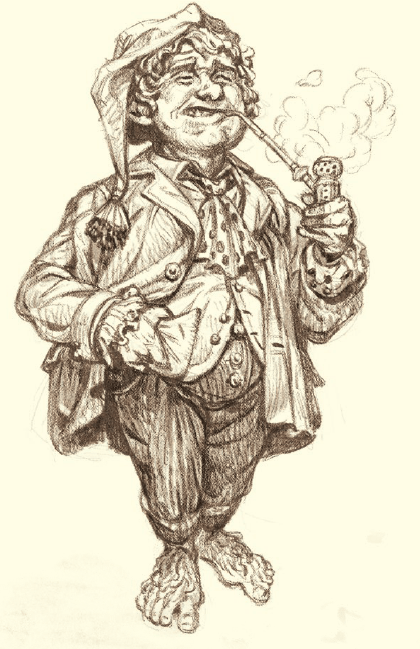
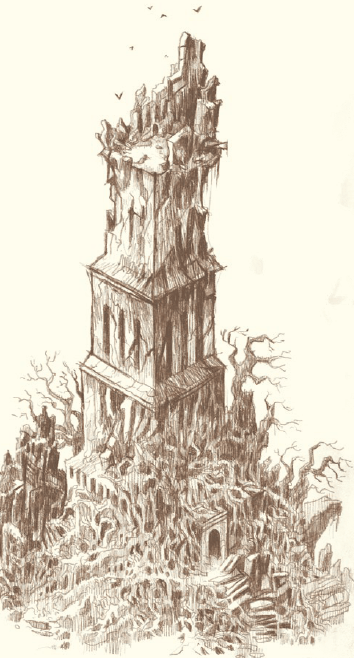









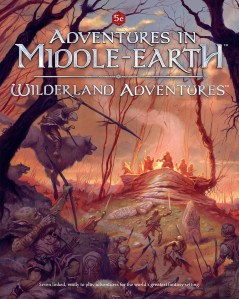


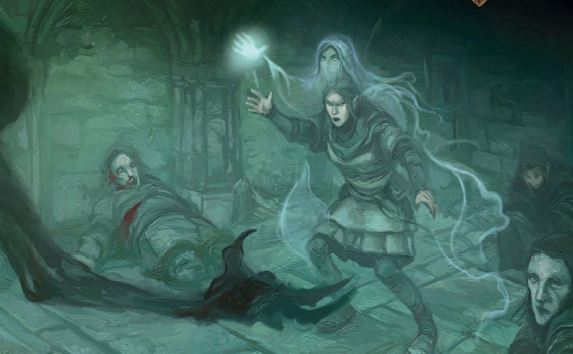

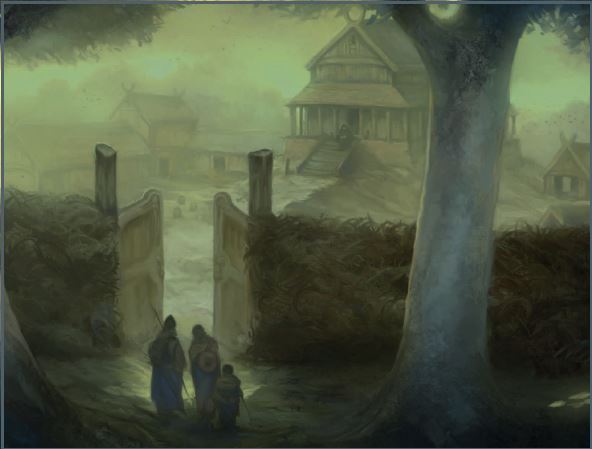


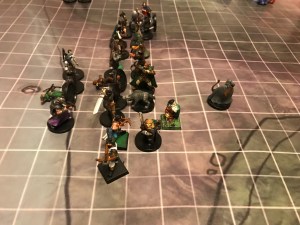
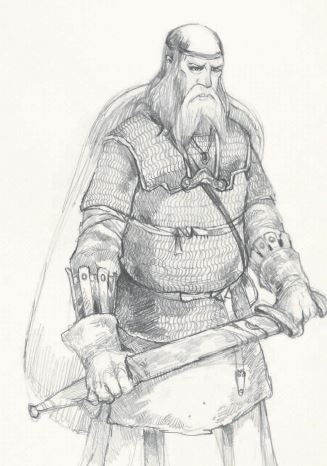



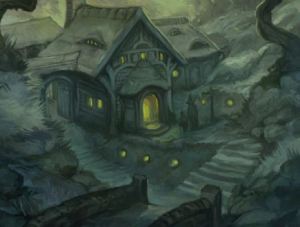

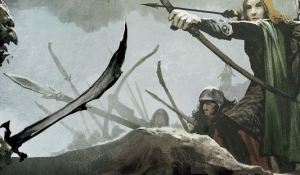













 The first large section is on the setting. It has a few pages on the Wilderlands and about 10 pages on Lake-town, which is the default starting location for the game. It also has a useful timeline, which has both ancient history and future events included.
The first large section is on the setting. It has a few pages on the Wilderlands and about 10 pages on Lake-town, which is the default starting location for the game. It also has a useful timeline, which has both ancient history and future events included.




